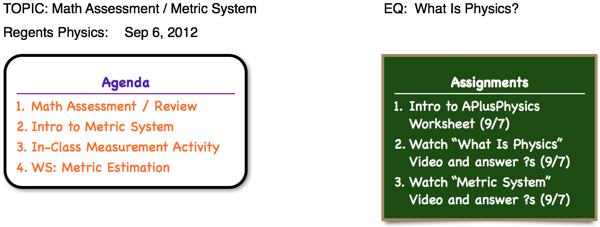
Physics involves the study, prediction, and analysis of real-world phenomena. To communicate data accurately, we must set specific standards for our basic measurements. The physics community has standarized on what is known as the Système International (SI), which defines seven baseline measurements and their standard units, forming the foundation of what is called the metric system of measurement. The SI system is oftentimes referred to as the mks system, as the three most common measurement units are meters, kilograms, and seconds, which we’ll focus on for the majority of this course. The fourth SI base unit we’ll use in this course, the ampere, will be introduced in the current electricity section.
The base unit of length in the metric system, the meter, is roughly equivalent to the English yard. For smaller measurements, the meter is divided up into 100 parts, known as centimeters, and each centimeter is made up of 10 millimeters. For larger measurements, the meter is grouped into larger units of 1000 meters, known as a kilometer. The length of a baseball bat is approximately one meter, the radius of a U.S. quarter is approximately a centimeter, and the diameter of the metal in a wire paperclip is roughly one millimeter.
The base unit of mass, the kilogram, is roughly equivalent to two U.S. pounds. A cube of water 10cm x 10cm x 10cm has a mass of 1 kilogram. Kilograms can also be broken up into larger and smaller units, with commonly used measurements of grams (1/1000th of a kilogram) and milligrams (1/1000th of a gram). The mass of a textbook is approximately 2 to 3 kilograms, the mass of a baseball is approximately 145 grams, and the mass of a mosquito is 1 to 2 grams.
The base unit of time, the second, is likely already familiar. Time can also be broken up into smaller units such as milliseconds (10-3 seconds), microseconds (10-6 seconds), and nanoseconds (10-9 seconds), or grouped into larger units such as minutes (60 seconds), hours (60 minutes), days (24 hours), and years (365.25 days).
The metric system is based on powers of 10, allowing for easy conversion from one unit to another. The front page of the Physics Reference Table includes a chart showing the meaning of the commonly used metric prefixes, which can be extremely valuable in performing unit conversions.
